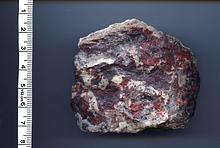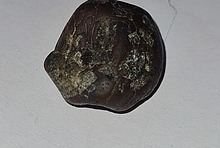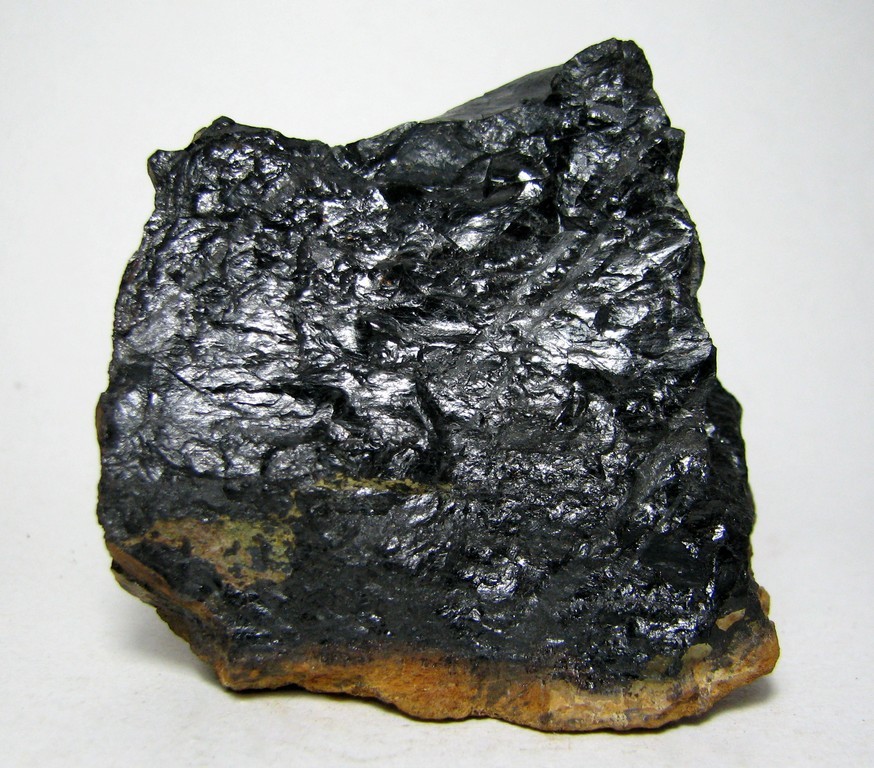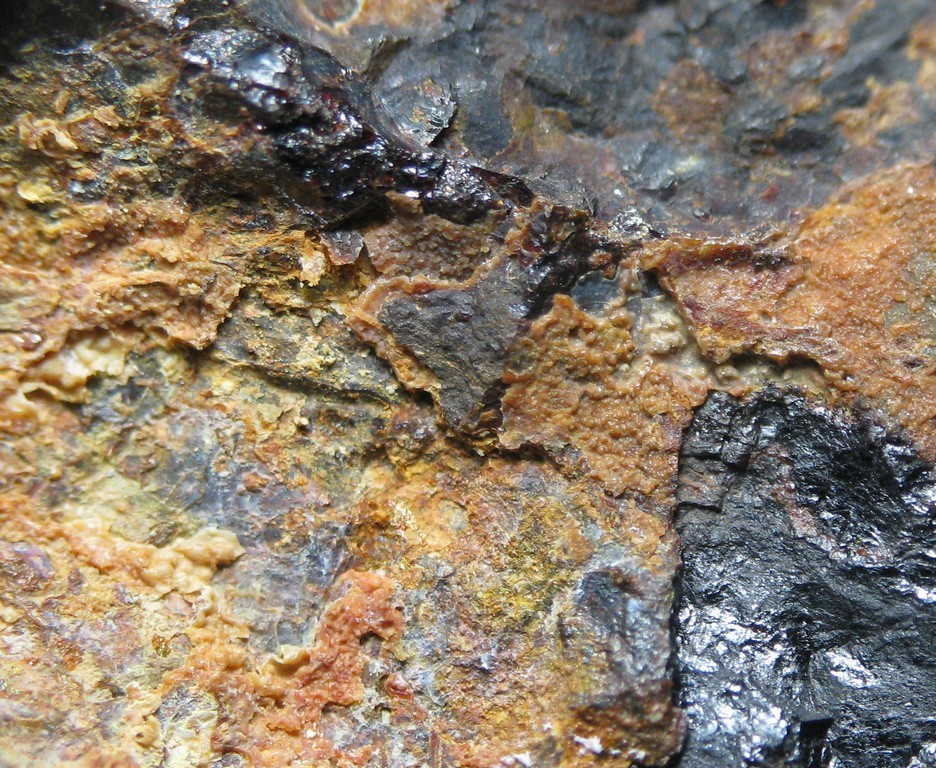Home PageAbout MindatThe Mindat ManualHistory of MindatCopyright StatusWho We AreContact UsAdvertise on Mindat
Donate to MindatCorporate SponsorshipSponsor a PageSponsored PagesMindat AdvertisersAdvertise on Mindat
Learning CenterWhat is a mineral?The most common minerals on earthInformation for EducatorsMindat ArticlesThe ElementsThe Rock H. Currier Digital LibraryGeologic Time
Minerals by PropertiesMinerals by ChemistryAdvanced Locality SearchRandom MineralRandom LocalitySearch by minIDLocalities Near MeSearch ArticlesSearch GlossaryMore Search Options
The Mindat ManualAdd a New PhotoRate PhotosLocality Edit ReportCoordinate Completion ReportAdd Glossary Item
Mining CompaniesStatisticsUsersMineral MuseumsClubs & OrganizationsMineral Shows & EventsThe Mindat DirectoryDevice SettingsThe Mineral Quiz
Photo SearchPhoto GalleriesSearch by ColorNew Photos TodayNew Photos YesterdayMembers' Photo GalleriesPast Photo of the Day GalleryPhotography
╳Discussions
💬 Home🔎 Search📅 LatestGroups
EducationOpen discussion area.Fakes & FraudsOpen discussion area.Field CollectingOpen discussion area.FossilsOpen discussion area.Gems and GemologyOpen discussion area.GeneralOpen discussion area.How to ContributeOpen discussion area.Identity HelpOpen discussion area.Improving Mindat.orgOpen discussion area.LocalitiesOpen discussion area.Lost and Stolen SpecimensOpen discussion area.MarketplaceOpen discussion area.MeteoritesOpen discussion area.Mindat ProductsOpen discussion area.Mineral ExchangesOpen discussion area.Mineral PhotographyOpen discussion area.Mineral ShowsOpen discussion area.Mineralogical ClassificationOpen discussion area.Mineralogy CourseOpen discussion area.MineralsOpen discussion area.Minerals and MuseumsOpen discussion area.PhotosOpen discussion area.Techniques for CollectorsOpen discussion area.The Rock H. Currier Digital LibraryOpen discussion area.UV MineralsOpen discussion area.Recent Images in Discussions
Identity HelpChevkinite - location help needed

22nd Jun 2014 21:05 UTCChristopher O'Neill
This seems to be an older specimen that was originally acquired as gadolinite however, I send a sample for EDS analysis and it came back as Chevkinite.
To me it seems to match the specimens from the Urals in Russia, with the internal reddish orange reflections as in: http://www.mindat.org/photo-90962.html
I was wondering if anyone out there was familiar enough with Chevkinite to help with identifying the proper location?
There is some Al in the formula, I was wondering if this can be used to help with the location as well.
I can provide a few more pictures if needed.
22nd Jun 2014 21:41 UTCReiner Mielke Expert

22nd Jun 2014 23:12 UTCChristopher O'Neill
Norway, however the label stated gadolinite as well.
The matrix (see pic) doesn't appear to be like the other Norway chevkinites, but then again I am totally unfamiliar with this mineral and its various assemblages.
Chris
23rd Jun 2014 00:51 UTCReiner Mielke Expert

23rd Jun 2014 03:47 UTCChristopher O'Neill
Here are additional photos and close-ups of the orange matrix.
It does seem botryoidal-like in some areas and fine grained powdery in others. I have no idea as to what it might be.

23rd Jun 2014 12:08 UTCKnut Edvard Larsen 🌟 Manager
Yes, all known chevkinites from Norway has been found in alkaline syenites or in syenite pegmatites (the first was found in 1970s) and has a different matrix. The alteration crust suggest a granite pegmatite.
Is there more infomation on the label ? Year of acquisition, name of dealer ?

23rd Jun 2014 15:21 UTCChristopher O'Neill
Sorry, I don't have any other details regarding this specific specimen however, it was part of a flat of old specimens dating from the 1950's or earlier so this may rule out Norway.
Visually, this specimen seems a closer match to the Russian specimens.
Looking at http://www.mindat.org/photo-210251.html - it shows an orange alteration crust from syenite-pegmatite.
As Pavel Kartshov mentions in the details for his Russian specimens:
"alteration rim, composed by mixture of yellow Th-rich Bastnasite-(Ce) and black tabular Ilmenite."
Perhaps the next step would be to have the alteration crust analyzed.
Chris
23rd Jun 2014 15:26 UTCReiner Mielke Expert

23rd Jun 2014 18:18 UTCChristopher O'Neill
Yes I understand however, the specimens I picked up which included this chevkinite were from the 1950's which precedes the discovery of the Norway occurrence mentioned by Knut in 1970's.
If I have the alteration crust analyzed and it indicates Th-rich Bastnasite-(Ce), it may help determine the locality.
Regards,
Chris
23rd Jun 2014 18:31 UTCReiner Mielke Expert

23rd Jun 2014 18:46 UTCChristopher O'Neill
Yes, that could be a possibility as well (sorry, I didn't think of that).
I was wondering that if Pavel did some analysis work on the alteration crust, he may also have done an analysis on the chevkinite, and if so, I was curious if it showed the presence of Al.
I will reach out in a PM.
I will also send out the alteration crust for analysis.
Thanks again,
Chris
23rd Jun 2014 21:12 UTCReiner Mielke Expert

24th Jun 2014 21:32 UTCChristopher O'Neill
Yea, I think you are right about that - could be a pain but interesting to see what he comes up with. I never heard back from Pav....
Chris
25th Jun 2014 08:22 UTCPavel Kartashov Manager
What about EDX spectrum, I never met chevkinites with so high contents of Al and Ca. Usual content of CaO in real chevkinites is below 2 mas.%. So there are two possibilities - chevkinite-allanite mixture was analysed, or this is the largest in the world sample of alumoperrierite (one its micrograin was described from Antarctica by Roy Macdonald). I am more tend to the first version.
What about alteration products, my specimen was described in article, which will be published in Mineralogical Magazine soon. Essential there is graphical intergrowth of bastnasite and ilmenite. In other words, during hydrothermal alteration of this chevkinite only silicon was eliminated (replaced by carbonate), while all other constituents (REEs, Fe,Ti) were immobile in this process.
On your specimen the alteration rim is completely different origin - it isn't hydrotermal, but connected with usual weathering in very superficial conditions.
If the specimen is large (more than 1-2 cm), I would bet for Madagascar origin of it.

26th Jun 2014 22:29 UTCChristopher O'Neill
Thanks very much for your reply.
This specimen is 6 x 5 x 2 cm. I thought that if you had done some analysis on your chevkinites, they might have had similar Al and Ca, but it doesn't look that way.
I could send a sample to Attard for EDX, unless you know of someone else.
How do you figure Madagascar as the location? Is that based on both size and alteration?
Regards,
Chris
27th Jun 2014 02:09 UTCPavel Kartashov Manager
From specimen http://www.mindat.org/photo-210251.html were made more than 20 analyses and it contains 2.82 vas.% CaO and 0.17 mas.% Al2O3. May be only Th content in it is too elevated. Look Macdonald R, Bagiński B, Kartashov P, Zozulya D, Dzierżanowski P Chevkinite-group minerals from Russia and Mongolia: new compositional data from fenites, metasomatites and ore deposits, - Mineralogical Magazine 06/2012; 76(3):535–549
Largest chevkinites from Ural never didn't exeed 6 cm in maximal direction. Whole crystals. In literature I was able to found only 5 cm size xls mentioned. You have 6x5 cm fragment. This is absolutely untypical for Ural.
Besides that we have not too hot and warm climate for such deep alteration of LREE-silicates. Some similar I had observe only on britholites from Sakhariok massif / Western Keivy massif boundary- 1-2 mm thick bastnasite crusts. Chevkinites from the same rocks are fresh - hydrated but not replaced with carbonates.
Madagascar pegmatites are famous by their extralarge crystals of rare-metal minerals.

27th Jun 2014 22:05 UTCChristopher O'Neill
I would like to post this specimen with the locality as follows: Madagascar - unless you think there is a specific province or district that it might fall under.
I will eventually have the alteration crust analyzed and perhaps that might (or might not) help with a definitive location.
Thanks for all of your help and input,
Chris

30th Jun 2014 09:23 UTCKnut Edvard Larsen 🌟 Manager
It might be from Madagascar, but that's just only a qualified guess.
The photos has been approved for your gallery. I also took the liberty to add a note in the caption, linked it to this thread.

30th Jun 2014 12:35 UTCLefteris Rantos Expert

8th Nov 2014 19:58 UTCBruno Hermier
I have exactly the same specimen of Chevkinite . It was labeled Gadolinite Madagascar . An EDS gave the same patern than your sample with Al and Ca . All outcrops in Madagascar are deeply weathered by tropical climate . Most of old samples have been found as loose blocks in red Laterite . Size plus weathering crust on the Chevkinite made me think it really comes from Madagascar . It comes from Syenites . Interesting is that the famous big Bastnaesites from Madagascar have their origin as secondary minerals after leaching of Chevkinite in the Syenites . Previously in the old literature these minerals were thought to come from the famous NYF granitic pegmatites of Madagascar . Here is reference of a recent paper about the subject . You will also find the probable location of your sample .
Rasoamalala 2013 . Geology of Bastnaesite and Monazite deposits in the Ambatofinandrahana area, central Madagascar : An overview
Journal of African Earth Sciences
Data base search : www.sciencedirect.com
If you like, I can send you a copy of this paper, the EDS patern and photos of my sample . I am not registered on Mindat.org better you contact me at adress bruno.hermier@edf.fr
About the story of my Chevkinite : after many years without contact, I called a work collegue who is now retired .His wife answered the phone . I learned that firemen came to pick all radioactive samples from the appartment . A special transport would come within 3 days to put all samples in nuclear waste . I rushed to save the collection of my colleague . I remembered from the 90 s that he was found of old basement of Africa and especially Madagascar and had a lot of Columbite, Euxenite, Monazite ..... Unfortunately the healf of my colleague does not allow him to tell anything about this sample . The firemen made a big mess in the boxes and labels .
Best regards
8th Nov 2014 21:03 UTCReiner Mielke Expert
Thank God you rescued the samples!! Good work! Please make sure that doesn't happen to your collection, it would be a big loss to the mineral collecting community.

15th Nov 2014 12:23 UTCBruno Hermier
Geology of bastnaesite and monazite deposits in the Ambatofinandrahana area, central part of Madagascar: An overview
V. Rasoamalala, S. Salvi, D. Béziat, J.-Ph. Ursule, M. Cuney, Ph. de Parseval, D. Guillaume, B. Moine, J. Andriamampihantona
Journal of African Earth Sciences, Volume 94, June 2014, Pages 128-140
Part 7 Metallogenic implications on page 9 " at Marovoalavo and Ifasina, Aegirine and Na Amphibole bearing Syenites contain cm and decimeter size crystals of Chevkinite . They are mainly alluvial "
You can contact me at bruno.hermier@edf.fr
15th Nov 2014 15:35 UTCKnut Eldjarn 🌟 Manager
I will not contest the possibility that the specimen is mislabeled and comes from Madagascar. But how do you know from an EDS that it is Chevkinite and not Perrierite ? Perrierite-(Ce) was found 40 years ago in Radøy north of Bergen in Norway in large, massive pieces (see: http://www.mindat.org/loc-54551.html). It was found in a lens in a metamorphic gneiss close to the seashore, but I have not seen any pieces with an alteration rim similar to yours.
Knut Eldjarn

15th Nov 2014 16:11 UTCBruno Hermier
V. Rasoamalala, S. Salvi, D. Béziat, J.-Ph. Ursule, M. Cuney, Ph. de Parseval, D. Guillaume, B. Moine, J. Andriamampihantona
Journal of African Earth Sciences, Volume 94, June 2014, Pages 128-140
Part 7 Metallogenic implications on page 9 " at Marovoalavo and Ifasina, Aegirine and Na Amphibole bearing Syenites contain cm and decimeter size crystals of Chevkinite . They are mainly alluvial "
bruno.hermier@edf.fr

16th Nov 2014 16:24 UTCBruno Hermier
V. Rasoamalala, S. Salvi, D. Béziat, J.-Ph. Ursule, M. Cuney, Ph. de Parseval, D. Guillaume, B. Moine, J. Andriamampihantona
Journal of African Earth Sciences, Volume 94, June 2014, Pages 128-140
Part 7 Metallogenic implications on page 9 " at Marovoalavo and Ifasina, Aegirine and Na Amphibole bearing Syenites contain cm and decimeter size crystals of Chevkinite . They are mainly alluvial "
bruno.hermier@edf.fr




Mindat.org is an outreach project of the Hudson Institute of Mineralogy, a 501(c)(3) not-for-profit organization.
Copyright © mindat.org and the Hudson Institute of Mineralogy 1993-2024, except where stated. Most political location boundaries are © OpenStreetMap contributors. Mindat.org relies on the contributions of thousands of members and supporters. Founded in 2000 by Jolyon Ralph.
Privacy Policy - Terms & Conditions - Contact Us / DMCA issues - Report a bug/vulnerability Current server date and time: April 18, 2024 15:27:37
Copyright © mindat.org and the Hudson Institute of Mineralogy 1993-2024, except where stated. Most political location boundaries are © OpenStreetMap contributors. Mindat.org relies on the contributions of thousands of members and supporters. Founded in 2000 by Jolyon Ralph.
Privacy Policy - Terms & Conditions - Contact Us / DMCA issues - Report a bug/vulnerability Current server date and time: April 18, 2024 15:27:37





















